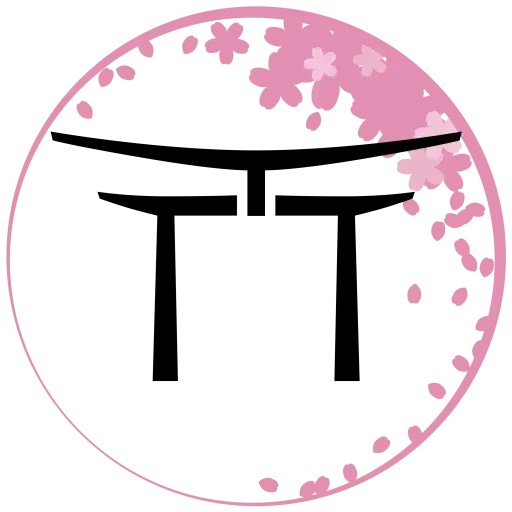Sports Festivals in Japan — Undoukai

Last Updated on October 18, 2024 by Kay
This post may contain affiliate links, meaning I may earn a small commission on any purchases through those links at zero additional cost to you. Whatever I make goes to keeping this website running and I am forever grateful for the support. See my Privacy Policy for more information.
Like many other countries, Japan has its fair share of national holidays, and one of them is Sports Day. Sports Day, formerly known as Health and Sports Day, falls on a weekend in mid-October. Alongside this, about half of daycares and schools in Japan hold their Sports Festival (sometimes referred to as Sports Day in English) usually on the same weekend, to celebrate this national holiday. The other half of schools have their Sports Festival in the spring.
Why the difference in when Sports Festivals are held in Japan? Well, for one, some schools will hold their Sports Festivals in spring to help prevent heatstroke since autumn can still be quite hot in Japan. Children can also get to know their classmates since April is when the new school year starts in Japan.
However, in autumn there is less of a chance of kids being affected by pollen allergies. Kids also know their classmates by this point in the school year, so they might be more willing to work with them as a team.
Table of Contents
What is Sports Festival in Japan?
Sports Festivals are called undoukai (運動会) in Japanese. Children practice for about a month for this festival, which is a time for kids to show off their athletic prowess and do sports activities in teams. Think of it kind of like a track and field day.
Sometimes there are dances and other types of performances as well, so not everything is competitive.
My daughter is always super excited for Sports Festival because she can’t wait to show off everything she’s practiced so hard for!
One very important thing to know is that since Sports Festivals are held on the weekend, children are given a day off from school on a weekday for the week that follows the event. This is called daikyu (代休). Sometimes what happens is that many schools will have the same day off, meaning that popular attractions for kids like Tokyo Disney and Universal Studios Japan end up packed.
This happened in 2024 when Sports Day (a national holiday) fell on a Monday, October 14th. Many kids had their Sports Festival a day or two prior (October 12th or 13th), meaning that they had the day off on Tuesday, October 15th. This created an extra-long weekend for families, which resulted in crazy-packed theme parks. So if you’re planning on visiting Japan in October, try to avoid popular attractions around Sports Day.
For a list of Japan’s national holidays, check out this website.
So What Happens at a Sports Festival in Japan?
In this article, I’ll share my experience attending my daughter’s Sports Festival at her kindergarten in Japan. You can read about my experience attending a Japanese daycare’s Sports Festival here.
Opening Ceremony
As with all school events in Japan, there’s an opening ceremony where usually the principal of the school gives a speech. During this time, all the students at my daughter’s kindergarten came out and lined up according to their class. It was all very organized (unsurprisingly), especially since the kids had practiced for weeks beforehand.
They then all did some warm-up stretches to the Mickey Mouse song (m-i-c-k-e-y m-o-u-s-e) before each class took turns doing sports activities.
Here’s an overview of the activities my daughter’s kindergarten did for their Sports Festival.
Note that this order in this article isn’t the same as the program. I organized this according to grade so you can see the differences in what children do as they become older, but in the Sports Festival, the grades alternated. For instance, the first years would do an activity first, followed by the second-year students, and then the third.
I should also mention that some of the activities might change, so what first years do one year might be different the following year.
First Year Students (Ages 3-4)
Before I get into what these little guys did, I just want to express how ADORABLE kids are at this age and how much they change from first-year to second-year students. I didn’t realize how much my kid would grow in a year — she used to be so itty bitty! The change from toddler to little kid is really something, and as a mother, I was not ready.
よーいどん!ぎゅっぎゅっぎゅっ! (Ready, Set, Go! Hug, hug, hug!)
As the title suggests, this involved the first-year students running to their homeroom teacher in pairs and giving them a big hug! It was, unsurprisingly, super cute.
おそらにとどけ!バンバンザイ (Fly to the sky! Hip hip hooray!)
This was another adorable activity. The first-year students wore little yellow shorts with black stripes so they looked like bumble bees and danced to a song called Mitsubachi Honey. It was very similar to the video below:
すすめ!小さなヒーロー (Go forth, small hero!)
Wearing capes, kids ran around to a pylon with a parent (most were fathers) and then were carried back like they were Superman flying in the sky!
At the end, all the parents threw their kids into the air (and caught them, of course).
Second Years (Ages 4-5)
ゴールにむかって よ〜いドン! (Go to the goal! Ready, set, go!)
Kids raced around half of the track to see who would reach the goal first.
ジャンボリ ⚪︎ (Jamboree [Name of School])
The second-year students did a cute dance to Jamboree Mickey with golden pom poms. This is a Japanese song so if you’re interested in hearing how it sounds, watch the video below:
玉入れやります!がんばります!(Throw the balls in! I’ll do my best!)
Kids threw small balls into a net hanging from a pole while having to intermittently dance to the song Bling-Bang-Bang-Born by Creepy Nuts. The team that had the most balls in the net won!
After this, the parents then had to do the same thing (and yet again, mostly fathers… who were not dancing and got called out, haha).
If you’re not familiar with the Bang-Bang-Born song, you can watch it below (my daughter is obsessed with it!).
Third Years (Ages 5-6)
はやくてゴメン♡親子で大玉リレー (Sorry for being so fast! Parent and child ball relay)
Kids rolled giant balls with a parent (again, mostly fathers) straight ahead to their classmate waiting on the other side. The class that had everyone roll the ball first won!
「輪」〜つながり〜 (Connect the Rings)
This was really interesting. The kids basically made different types of formations in groups of three, ending with a small human pyramid. (I felt sorry for the kids at the bottom, haha.)
パラバルーン〜ぼくらのアドベンチャー~ (Paraballoon — Our Adventure)
Remember those giant rainbow parachutes you would play with in elementary school with your classmates? I was so excited to see this still exists!
Kids moved the parachute around in a choreographed sequence with their classmates and then at the end, they bounced a whole bunch of plastic balls on the parachute.
This is something my daughter is really looking forward to doing in her last year of kindergarten in Japan!
Closing Ceremony
The principal of the school gave another speech (and cried as she recalled how hard the kids worked to prepare for the Sports Festival). Kids then received plastic gold medals and (finally) got to go home.
My daughter was tired but she was still happy at the end.
How to Prepare for a Sports Festival in Japan
If you’re a parent in Japan and preparing for your child’s first Sports Festival, here are some tips:
Study the Program
For my daughter’s kindergarten, I am given a program with a map of where the Sports Festival would be held. This is usually on school grounds for children in elementary school and up but my daughter’s kindergarten’s Sports Day is always held at a nearby elementary school. The map also tells us where our kid’s class would be standing, so we always try to sit around there.
However, kids move around during the Sports Festival, so be prepared to move as well to get good photos of your kids.
Some parents also set up tripods to record the festival, although I can’t say for certain whether all schools in Japan allow this.
Arrive Early
In order to get a good spot, you might want to show up early. At my daughter’s kindergarten, parents showed up 1.5 hours before the start time! This is especially important if you have extended family coming such as grandparents.
I also recommend trying to get a spot near shade, such as a tree, if there is one.
If the school allows it, bring a mat to sit down on (and save your spot) as well.
Bring Water and a Hat
Thanks to climate change, autumn in Japan is getting increasingly warmer. And even if it’s somewhat cooler than usual, the sun can change that easily.
It was around 22 degrees when my daughter had her Sports Festival in October, which should have been pleasant autumn weather but the sun was absolutely blazing. This is why I recommend bringing water and wearing a hat if possible.
Prepare for a Long Morning
My daughter’s Sports Festival was a whopping three hours. Pair that with the sun beating down on you and it’s a long morning. (My daughter was over it pretty quickly, poor girl…)
If you have other kids, bring something for them to play with, like crayons and a coloring book.
Have Lunch Plans
If you decide to eat out at a restaurant instead of home for lunch, I suggest avoiding restaurants nearby because they will likely be full. If you can, make a reservation.
Wrap-up: Japanese Sports Festivals
Sports Festivals are a wonderful way to promote good health through physical activity. Kids can bond with their peers and look forward to doing something new every year.
And as a parent, I love seeing how much my daughter has grown from the previous year and what’s she capable of doing.

